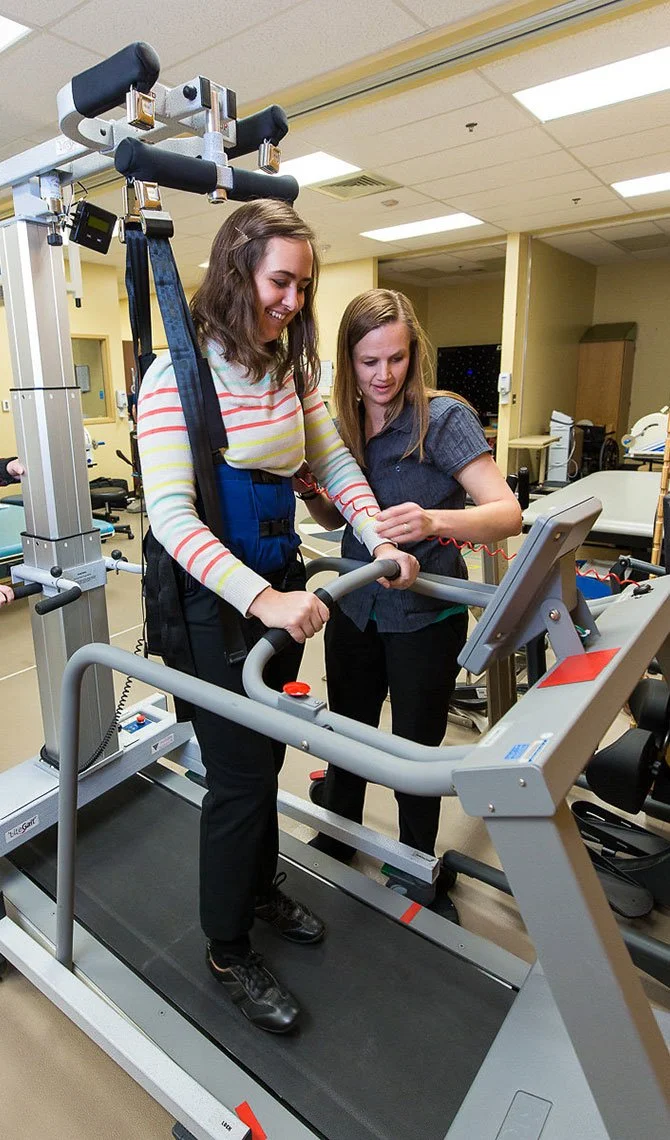Care Team: Clinic, HBOT, & Neuro PT
As a patient dealing with IBM, I've learned that finding the right doctors and specialists, establishing a strong support network, and exploring various treatment options are essential components of managing my health effectively. I’ve shared a series of posts on choosing a care team in the past, and today, I want to update you on my experiences. Medicine is constantly changing, and I will continue to explore any new options that come up—conventional and alternative—to address this disease. The big-picture efforts that have helped immensely are below.
IBM Clinic
The foundation of my care team is the folks at the IBM Clinic. This clinic is one of many held by HonorHealth Neurology—Bob Bové Neuroscience Institute, each based on a specific disease. I am scheduled to meet with the IBM team every six months: a dietitian, a physical therapist, a speech therapist (for swallowing issues), an occupational therapist, and one of the top IBM doctors in the state. There’s also a social worker who can assist patients in finding other resources in the community to meet their needs, and a nurse coordinator for scheduling.
Once in an exam room, I visit with the providers individually, doing tests of my strength and gait, walking speed, swallowing, and more. I also get to talk one-on-one with the neurologist, who is always eager to answer my questions or accept the studies I share with her. After the appointment, the team works independently, reviews my case, and decides on any treatment needs or testing to clarify their findings. It works well; of course, I can always email or call any of them with questions and concerns. All the clinics are run this way, whether you have ALS or IBM, or another neuro issue. I suggest seeking this kind of clinic experience for anyone with IBM or another disease like it.
HBOT (Hyperbaric Oxygen Therapy)
I’ve written before about how helpful I’ve found HBOT. I typically go twice weekly, though I began by going more frequently. I experienced a bit of increase in strength in my hands and legs, a significant improvement in my swallowing issues, and a clearer head. My daughter tells me my skin looked great, too, from all the blood flow. My subjective improvements have been so impressive, the physician in charge hopes to do a case study on my experience. We hope we’ll be able to show objective improvements as well, once we get the final data from the Irvine study. I am all the more convinced of the efficacy of HBOT after taking one month off the treatments, per the doctor’s suggestion. It did not take long until I lost some strength, my swallowing became more difficult, and my brain felt starved of oxygen. I’m so glad to be back to my schedule of treatments and hope to get back to that sweet spot of doing great.
Neuro Physical Therapy
I was referred to Neuro Physical Therapy after falling three months ago, and found it quite different from any PT I have had in the past. First, they tested my balance, and I did poorly. They then determined which exercises I should do based on my biggest needs for strengthening. The exercises are all done with a harness or a belt to ensure I do not fall during them. Then we mimic real-life scenarios, build muscle memory, and strengthen messages from the brain to the feet. They have lots of fun tools for this: plastic stones for walking across a creek and two-inch-thick mats that provide an unfamiliar instability, such as grassy or squishy surfaces, to name a couple. During the exercise, I walk on different surfaces, then turn my head to the left and right. Then I move my head up and down while carrying on a conversation.
Best of all, they have a “reactive treadmill.” While walking on it, it moves from side to side and at different speeds, forcing you to respond to real-life abrupt changes in terrain, and strengthening muscles that can help you right yourself if you lose your balance. I would have fallen twice on the first try if I had not been harnessed in. I just hung there for a few minutes and then tried again. When I fell in the parking lot last year, it was by tripping over a clump of grass and being unable to right myself. This last fall seemed to come out of nowhere. So I know I need to improve my abilities in various ways. I see the treadmill work is valuable, but I have to admit, it is scary.
I have only done five treatments of this program and feel my ankles getting stronger. Luckily for me, my therapist knows about IBM (she has other patients with IBM) and is careful not to let me do too much and add to the inflammation as we try to help my balance.
I’ve discussed some other things that have helped me HERE (more details on HBOT), HERE (vagus nerve self-care), and HERE (free Zoom exercise class). Check them out again if you want to review them or if you missed them the first time.
What kinds of things have been valuable to you so far? Put your response in the comments. Until next time, Linda.
“All we have to decide is what to do with the time that is given us.”
This blog post is based on personal experiences and is not meant to provide medical advice.
Always consult your healthcare professional for personalized guidance on your health journey.
We have an “affiliate” bookshop store HERE where you can find books Linda has read or that look helpful for folks dealing with chronic diseases of various kinds. We get a small financial reward if you purchase
a book through the shop. It also helps support independent booksellers. Thanks!



